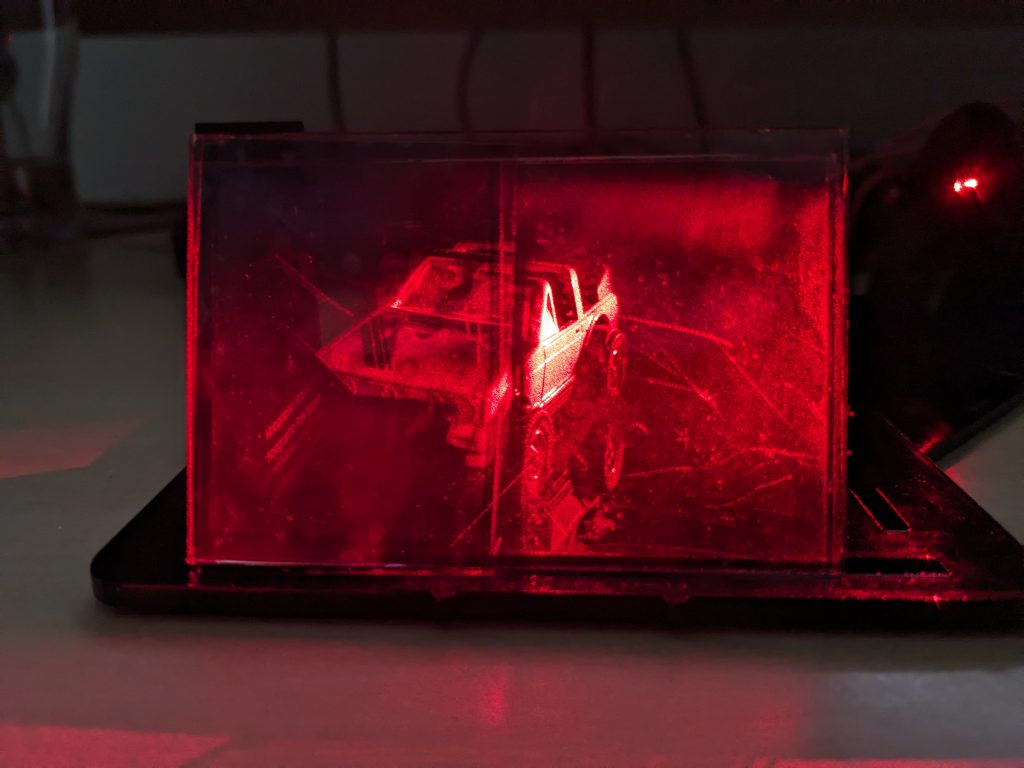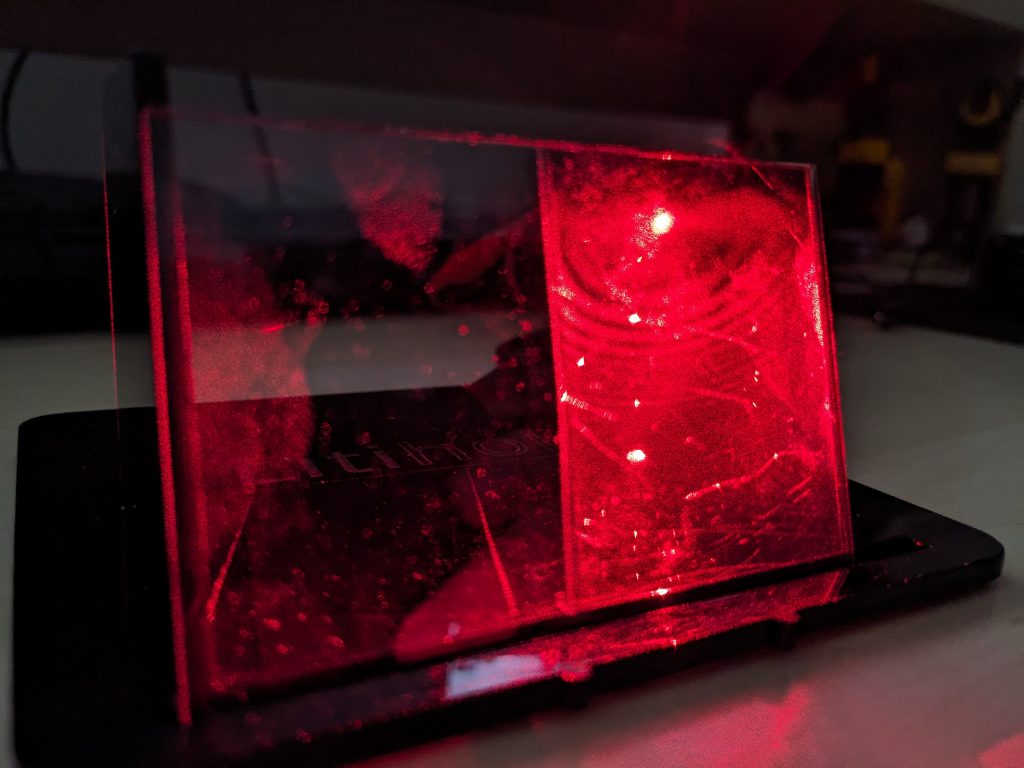I’ve long heard that a hologram is a unique artifact as the whole is contained in its parts, and I was always confused as to how this could be possible. It didn’t make sense to me, yet time and again I saw this idea referenced in stories and in non-fiction as a suggestion that holograms are special fractal like memory banks that could help with quantum computing and perhaps explain the underlying nature of the universe too.
For example Wikipedia writes:
“When a hologram is cut in half, the whole scene can still be seen in each piece. This is because, whereas each point in a photograph only represents light scattered from a single point in the scene, each point on a holographic recording includes information about light scattered from every point in the scene.”
And popular pseudo science writers such as David Icke write:
“an extraordinary characteristic of holograms is that every part of a hologram is a smaller version of the whole and this is the foundation of the principle of ‘as above, so below’,”
So I knew I had to try and see for myself what would happen to a hologram that was cut in half, could the whole image actually be contained in every part? The first question depended on a second more visceral question of how could I go about making my own hologram and then cutting it up? Well in recent weeks I discovered Litiholo as a company that make a kit that allows you to create your own holograms at home. I bought one then so that I could experiment with this idea.
So here is a toy car that I used to make a hologram:

And here is the 1st hologram i made of it.
Now I wanted to keep this one so I made another to cut up and see if all the stories are true!

With the hologram made, I cut up the holographic film on which the image was formed.
First here is the whole hologram and its two halves next to each other,

And now this is each half.


In quick conclusion then I was lied to! This is not a valid idea, no matter how popular or wide spread.
As proof, here is the hologram from other angles it can be seen that the missing parts cannot be restored by looking at it differently:


(My apologies for the fingerprints and general noise in the hologram, I am new to this)
From the above then you can see that the hologram does nothing to resize itself (as one might expect if the whole was in every part) and this was one of the myths I needed to debunk. A hologram cannot suddenly reframe itself on the film if a part of it is cut off, The cut off piece also can’t just suddenly adjust itself contain the whole image either.
The idea that a hologram is like a fractal then, with each small part containing the same information as the ordinal large image is bunk. At least with this type of transmission hologram, it is more like a photograph than people imagine.
So what is going on here?
I think I understand what is happening and would suggest that the developed holographic film is like a 3d matrix of pixels with each pixel acting like a sphere that reflects light differently from different angles. The laser picks out only some aspects of the 3d pixels depending on the viewing angle and this differs from a flat plain of 2 dimensional pixels found in a photograph, which can always be seen from any angle. It is spheres versus circles in terms of pixel.
So the image can be viewed from many angles and each angle viewed yields a different scene. Each angle can be seen as a flat plain photo of the car object. So each angle viewed is encoded on the 3d film and the light photons bounce off differently at different viewing angles. Crucially for this experiment if a part of that is cut off then it is simply gone. There is no magic here.
The image as viewed from certain angles will be missing in the cut off piece of film and cannot be somehow contained in the original remaining piece of film. So we have lost like 50% of the possible viewable angles which have been recorded on the original film and they cannot be restored from viewing the other piece of film.
This all boils down to the film itself and how it records the image, and if you take away part of that film then there is a clear loss of parts of the image, and these cannot come back under any circumstance.
It’s funny how I had to see it for my self to understand what was going on, even though I always felt the truth was not as reported!
Science 🙂
